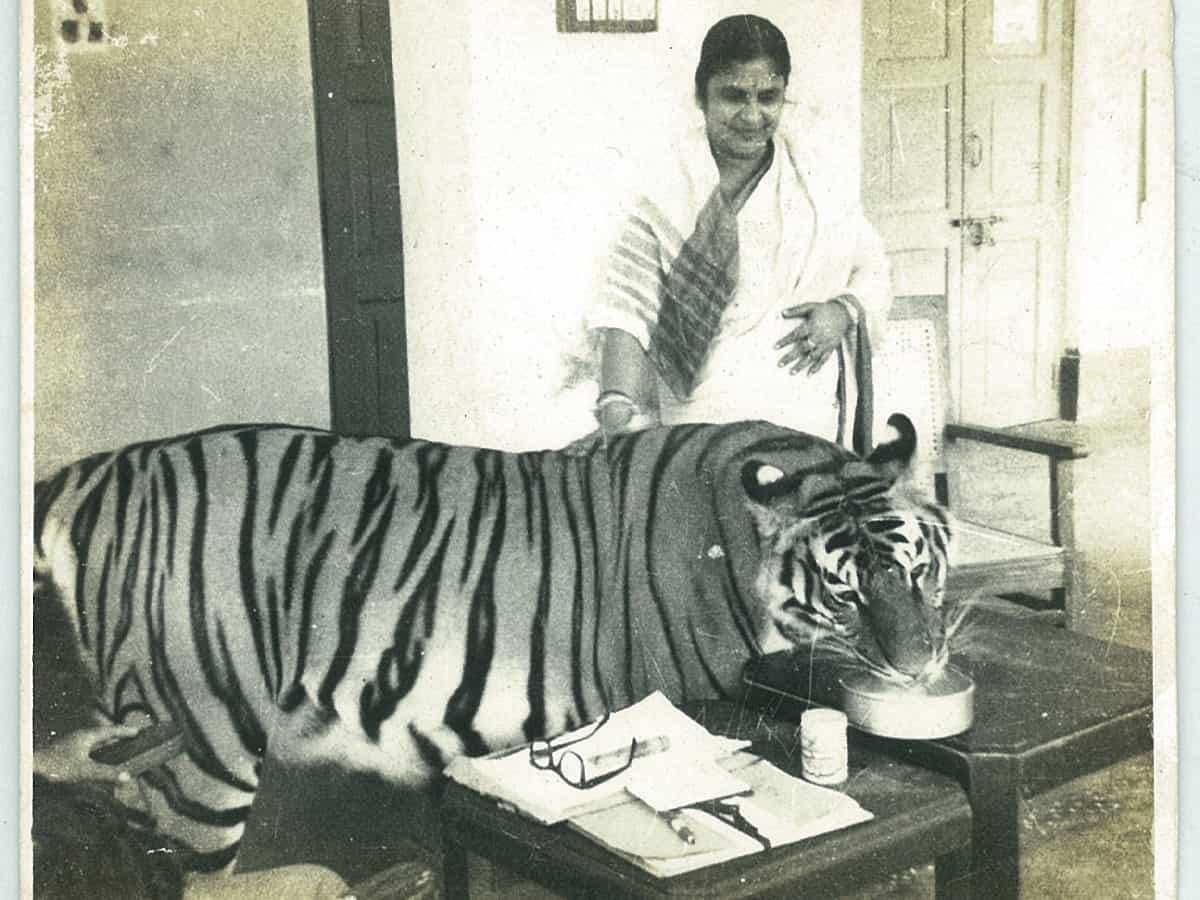
The relationship between humans and tigers has led to many tales of adventure chronicled by Jim Corbett, Kenneth Anderson and several others. But there is another lesser known story that is unique. It is about a deep emotional connect that developed between a tigress named Khairi and a forest conservation officer named Saroj Raj Chowdhury.
Chowdhury was the top ranked conservation officer in Odisha and set up the Similipal National Park and Tiger Reserve in that state. He was also appointed the head of Project Tiger in 1973. He invented the method of identifying tigers by their pug marks. He carried out the first tiger census in India by using this method.
In recognition of his services, the government of India posthumously conferred upon him the Padma Shri in 1983. But he is most famous for the unusual bond that he developed with a tigress named Khairi.
One day in 1974, in the forests of Odisha, a party of tribal foraging for honey, heard a small animal crying in the bushes. They approached the spot cautiously and found that it was a little female tiger cub which had been abandoned by its mother.
They brought the cub, which was no bigger than a cat, to the bungalow of the forest conservation officer, perhaps hoping for a reward. At that time Chowdhury was already keeping several wounded animals in the courtyard of his spacious bungalow located in the forest. He had a crocodile, a bear cub that he had named Jumbu, a blind hyena which he called Baina, a mongoose and some smaller animals.
The duo formed an instant bond
When he saw the little tiger cub he liked it at once and decided to add the animal to his menagerie. Amazingly the little animal also took an instant liking to Chowdhury and jumped into his arms as soon as he approached. From appearances it had been abandoned at least a day or two earlier. So it had not been fed and had become injured while trying to search for its mother. Had the tribal not found it, the baby would have died soon.
Chowdhury felt a sense of deep peace and contentment as the helpless cub snuggled against his chest. Since it had been found near the river Khairi, he named it Khairi. He began to feed it regularly and soon it became a part of Chowdhury’s family. As it grew in size, it did not behave like a wild animal. Instead it behaved like a tame and domesticated pet.
It would not eat unless the food was offered by Chowdhury or his family members. Even the choicest morsels of meat were rejected by Khairi unless it was given by the hands of Chowdhury. Khairi also became a great friend of Chowdhury’s dog, Blackie. The two animals often frolicked around the compound, chasing each other and pretending to fight with each other.
Indira Gandhi approved the plan
Tourists who visited the Simlipal National Park made sure to visit Chowdhury’s house and take photographs of this unusual tigress with her human family members. Finally the news reached the Prime Minister Indira Gandhi who was the moving force behind Project Tiger. She spoke to Chowdhury on the phone and enquired about the welfare of the tigress that was living in his house.
She had a long conversation with the official and after receiving satisfactory answers to all her probing questions, Gandhi was satisfied that the animal was in good hands. So she allowed Chowdhury to keep the animal in his house.
Tragedy struck a blow
Seven years passed joyfully but then one day tragedy struck. A mad dog infected with rabies ran into the compound and created havoc as it tried to bite other animals and humans. Seeing its family members in danger, tigress Khairi jumped into the fray. With a few swipes of her powerful paws, she tore the mad dog apart. But in the fight, the dog too managed to inflict bites on the tigress.
Then the inevitable happened. Although vets were called in to treat the tigress, rabies took hold of the animal and she howled continuously in pain and delirium. Her body went into spasms and her deranged mind could no longer distinguish friend from foe. Finally, with all options exhausted, the vets told Chowdhury that the tigress would definitely die. They advised that the animal should be euthanized to avoid further suffering.
With a heavy heart and great reluctance, Chowdhury agreed. He called up Gandhi and explained to her what had happened. Then with her permission and with the agreement of his family, he gave the green signal for euthanization. Thereafter the loving and brave tigress was put to sleep forever.
The body of the tigress was buried in the compound of the house. But the memories of Khairi and the tragic end to her life continued to haunt Chowdhury. After the tigress died he was a changed man. It seemed like he had lost his daughter. He had no more will to work or even stay alive. His health deteriorated and one year after the death of Khairi, Chowdhury himself suffered a massive heart attack and passed away. The local people said that he had left the earth to join his tigress daughter.
Thus ended the unusual story of a deep emotional bond between a wild animal and a caring human whose love for the tigress was unparalleled in the annals of wildlife preservation.



